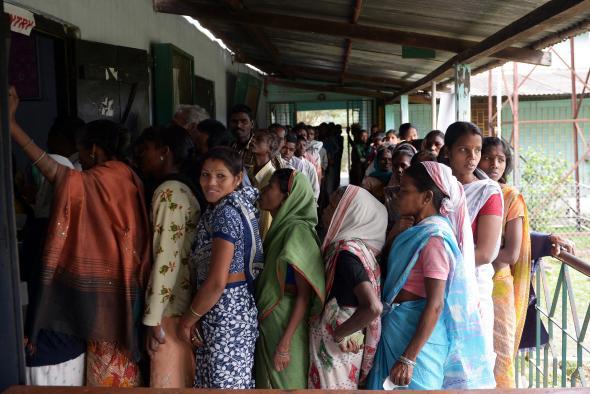The largest election in the world kicked off today, when voters went the polls in India’s far eastern states of Assam and Tripura. Over 800 million Indians are eligible to vote in the multistate national election, which will wrap up on May 12.
There are quite a few story lines to follow throughout the vote, but one of the biggest ones may be the role played by the country’s 150 million first-time voters.
With half its population under 24, India is currently at the peak of its youth bulge. With one of the world’s lowest dependency ratios—the number of those not in the labor force to those who are—this has traditionally been thought of as a massive advantage to India, a “demographic dividend” compared with the aging populations of places like China.
But lately, the story has been complicated by India’s sluggish economic growth—the rate of job creation is actually slowing. Between 2005 and 2010, only 1 million jobs were created for almost 60 million new entrants to the labor market. Concerns have also emerged about the skewed gender ratios in many parts of the country, evidence of sex-selective abortion.
This seems as though it should be bad news for the ruling Congress Party. The surging Bharatiya Janata Party is headed by the controversial Narendra Modi, a former Hindu nationalist firebrand who has worked in recent years to rebrand himself as the pro-business voice of the frustrated middle-class. The relatively new Aam Aadmi, an anti-corruption party that performed surprisingly well in state elections last December, is also out for the youth vote, successfully running candidates as young as 26 in a country where the majority of ministers are over 65.
The demographic dividend won’t last forever. Already the median age has risen from around 22 in 2001 to over 24 in 2011, meaning these are pretty key years for the country’s economic future.
Given what’s starting to look like an insurmountable lead for Modi, most Indians seem to have decided to gamble on a new approach.
